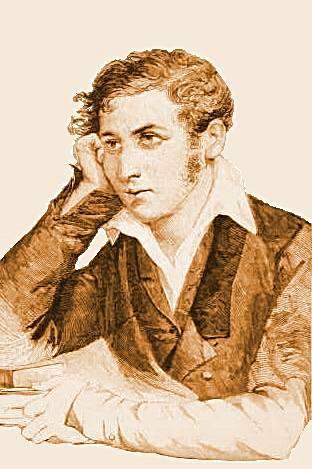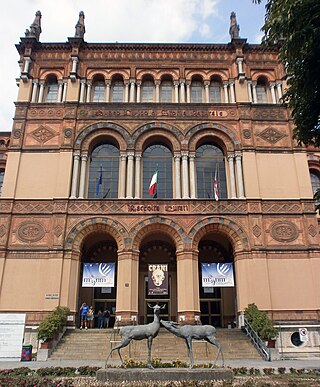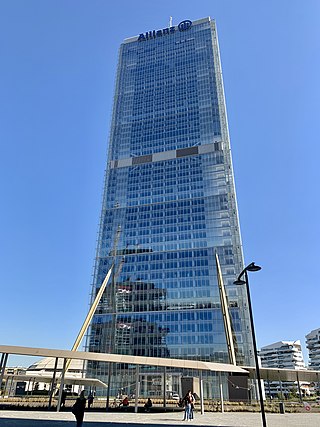
Football Club Internazionale Milano, commonly referred to as Internazionale or simply Inter, and colloquially known as Inter Milan in English-speaking countries, is an Italian professional football club based in Milan, Lombardy. Inter is the only Italian side to have always competed in the top flight of Italian football since its debut in 1909.

Milan is a city in northern Italy, capital of Lombardy, and the second-most populous city proper in Italy after Rome. The city proper has a population of about 1.4 million, while its metropolitan city has 3.26 million inhabitants. Its continuously built-up urban area is the fourth largest in the EU with 5.27 million inhabitants. According to national sources, the population within the wider Milan metropolitan area, is estimated between 8.2 million and 12.5 million making it by far the largest metropolitan area in Italy and one of the largest in the EU.

Via Monte Napoleone, also spelled Via Montenapoleone, is an upscale shopping street in Milan, Italy, Europe's most expensive street (2022) and the third most expensive street in the world. It is famous for its ready-to-wear fashion and jewelry shops, and for being the most important street of the Milan fashion district known as the Quadrilatero della moda, where many well-known fashion designers have high-end boutiques. The most exclusive Italian shoemakers maintain boutiques on this street.

Milan Cathedral, or Metropolitan Cathedral-Basilica of the Nativity of Saint Mary, is the cathedral church of Milan, Lombardy, Italy. Dedicated to the Nativity of St Mary, it is the seat of the Archbishop of Milan, currently Archbishop Mario Delpini.
The year 1838 in architecture involved some significant architectural events and new buildings.

The Galleria Vittorio Emanuele II is Italy's oldest active shopping gallery and a major landmark of Milan in Italy. Housed within a four-story double arcade in the centre of town, the Galleria is named after Victor Emmanuel II, the first king of the Kingdom of Italy. It was designed in 1861 and built by architect Giuseppe Mengoni between 1865 and 1877.

Carlo Cattaneo was an Italian philosopher, writer, and activist, famous for his role in the Five Days of Milan in March 1848, when he led the city council during the rebellion.

The Museo Civico di Storia Naturale di Milano is a museum in Milan, Italy. It was founded in 1838 when naturalist Giuseppe de Cristoforis donated his collections to the city. Its first director was Giorgio Jan.
Pierino Gavazzi is an Italian former road bicycle racer, who was professional from 1973 to 1993. He rode in the 1975 Tour de France and 1976 Tour de France, as well as in seventeen editions of the Giro d'Italia, winning four total stages. He also won the 1980 Milan–San Remo.

Neoclassical architecture in Milan encompasses the main artistic movement from about 1750 to 1850 in this northern Italian city. From the final years of the reign of Maria Theresa of Austria, through the Napoleonic Kingdom of Italy and the European Restoration, Milan was in the forefront of a strong cultural and economic renaissance in which Neoclassicism was the dominant style, creating in Milan some of the most influential works in this style in Italy and across Europe. Notable developments include construction of the Teatro alla Scala, the restyled Royal Palace, and the Brera institutions including the Academy of Fine Arts, the Braidense Library and the Brera Astronomical Observatory. Neoclassicism also led to the development of monumental city gates, new squares and boulevards as well as public gardens and private mansions. Latterly two churches, San Tomaso in Terramara and San Carlo al Corso, were completed in Neoclassical style before the period came to an end in the late 1830s.

Leopoldo Pollack was an Austrian-born Italian architect who was active in Milan where he became one of the leading proponents of Neoclassical architecture.

The Palazzo Belgioioso is a palatial residence in the northern Italian city of Milan, completed in 1781 in a Neoclassical style by Giuseppe Piermarini.

Luigi Clerichetti was a 19th-century Milanese architect, noted for his Neoclassical-style buildings. He designed the Palazzo Tarsis (1836–1838), and the Palazzo Gavazzi in 1838 for the wealthy Gavazzi family. He also designed the facade of the Palazzo Orsini of Milan during restoration of the 16th century building, and the Villa Ciani in Lugano, Switzerland in 1840.

The Palazzo Anguissola or Anguissola Traversi is a palace located at Via Manzoni number 10, in central Milan, a city in the northern Italy. Construction began in 1778, and its Neoclassical facade, designed by Luigi Canonica, was added in 1829.

The Palazzo Tarsis is an 18th-century mansion in Milan, northern Italy, built in the Neoclassical style. Its interiors were fully renovated after the building was bombed in 1943. Historically part of the Porta Nuova district, it is located at 1, Via San Paolo.

The thermal power station Regina Margherita was a large power station for the production of electricity, preserved at the Museo nazionale della scienza e della tecnologia Leonardo da Vinci in Milan, Italy. The station opened in 1895 and was originally installed in the Egidio e Pio Gavazzi silk factory in Desio (Milan), where it operated until 1954. It supplied electricity for lighting and for the operation of 1,800 looms, generating alternating electric current at a voltage of 200 V.

Allianz Tower, also known as Isozaki Tower, is a fifty-floor, 209-metre-tall (686 ft) skyscraper in Milan, Italy. Designed by Japanese architect Arata Isozaki and Italian architect Andrea Maffei, it serves as the headquarters of the Italian subsidiary Allianz SpA.
The 1980 Milan–San Remo was the 71st edition of the Milan–San Remo cycle race and was held on 16 March 1980. The race started in Milan and finished in San Remo. The race was won by Pierino Gavazzi of the Magniflex team.

Palazzo Cornazzani is a palace in Pavia, in Lombardy, where, between 1895 and 1896, Albert Einstein lived.

















